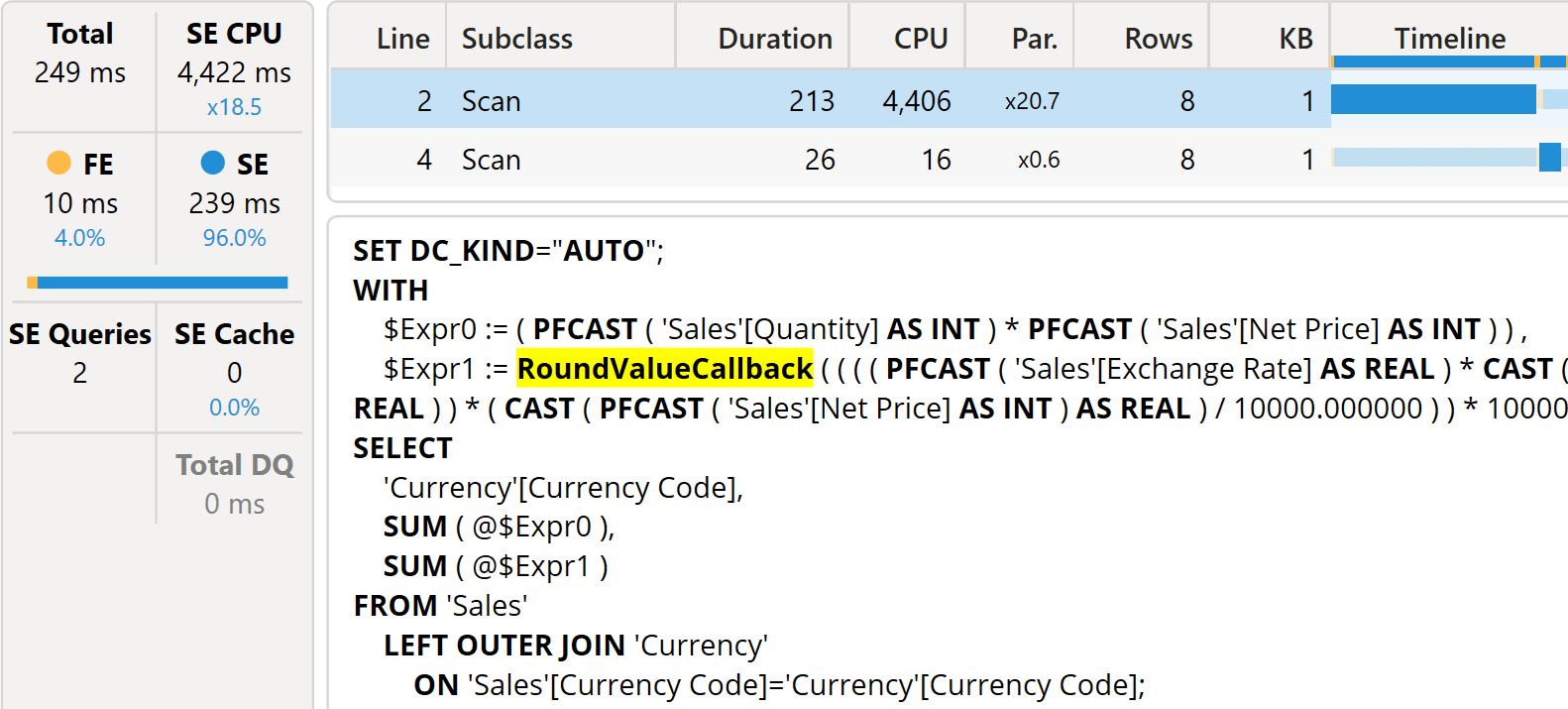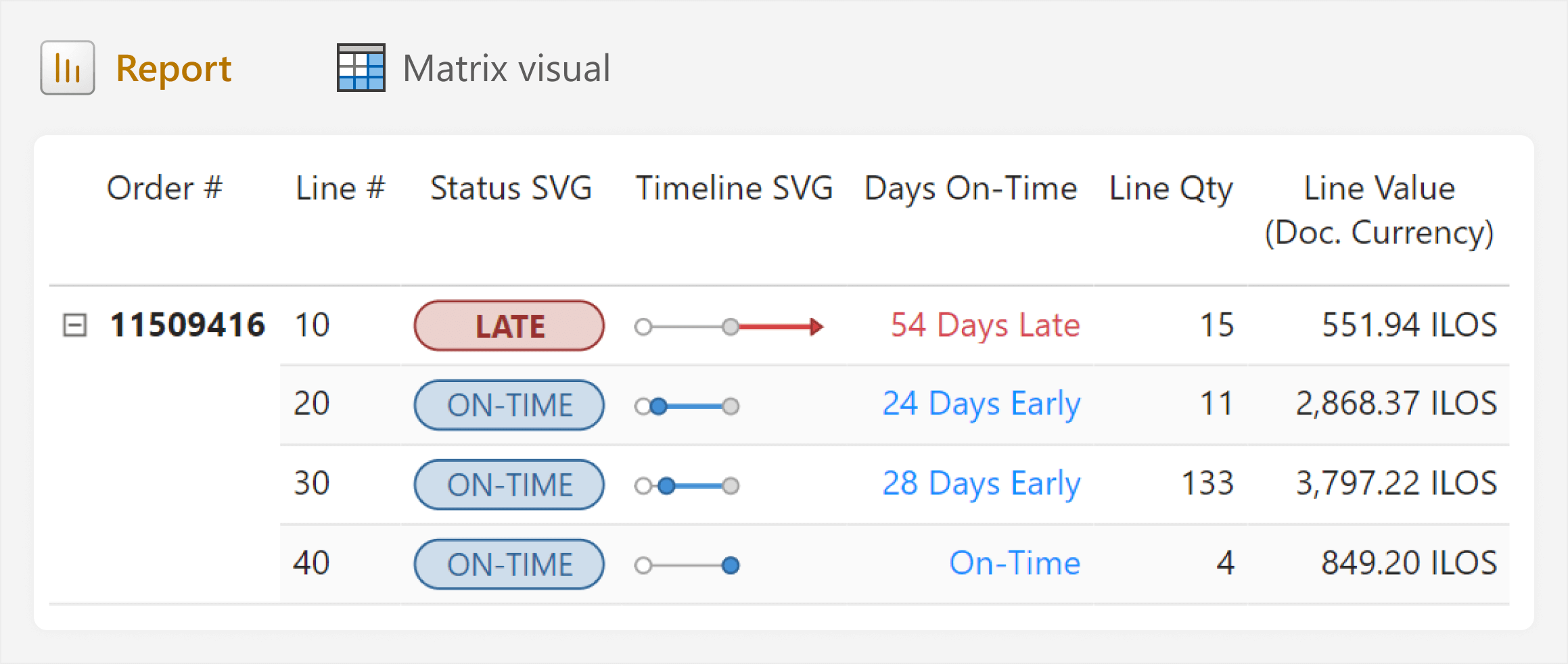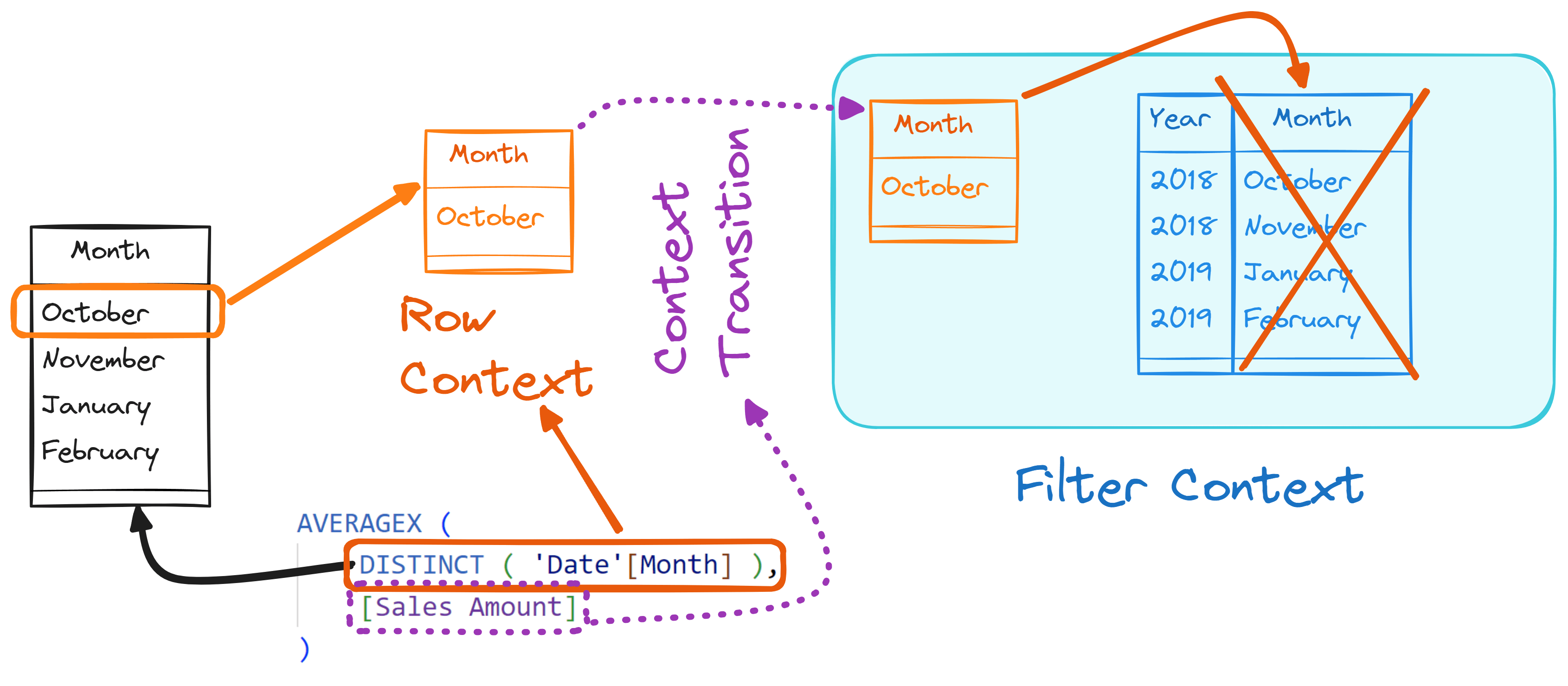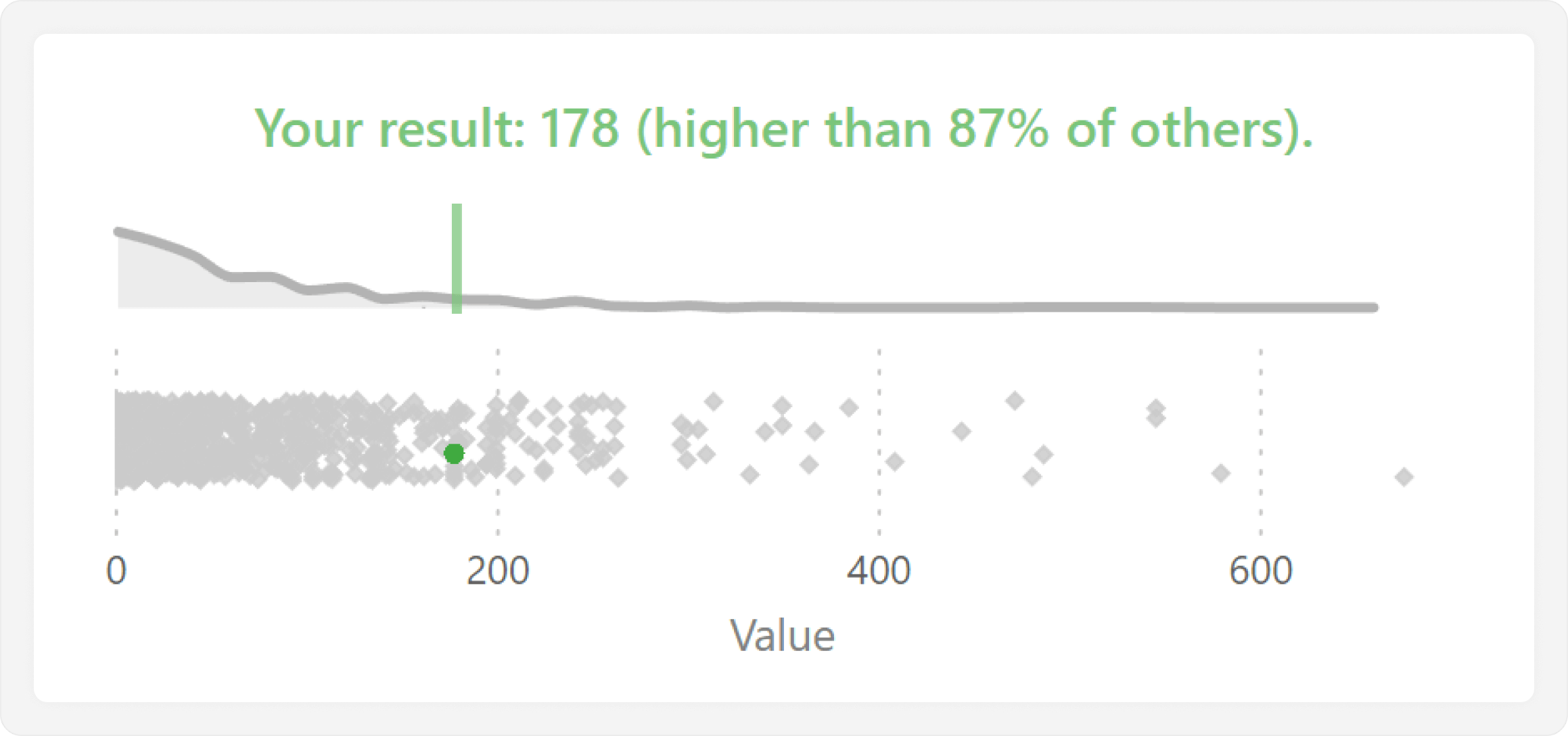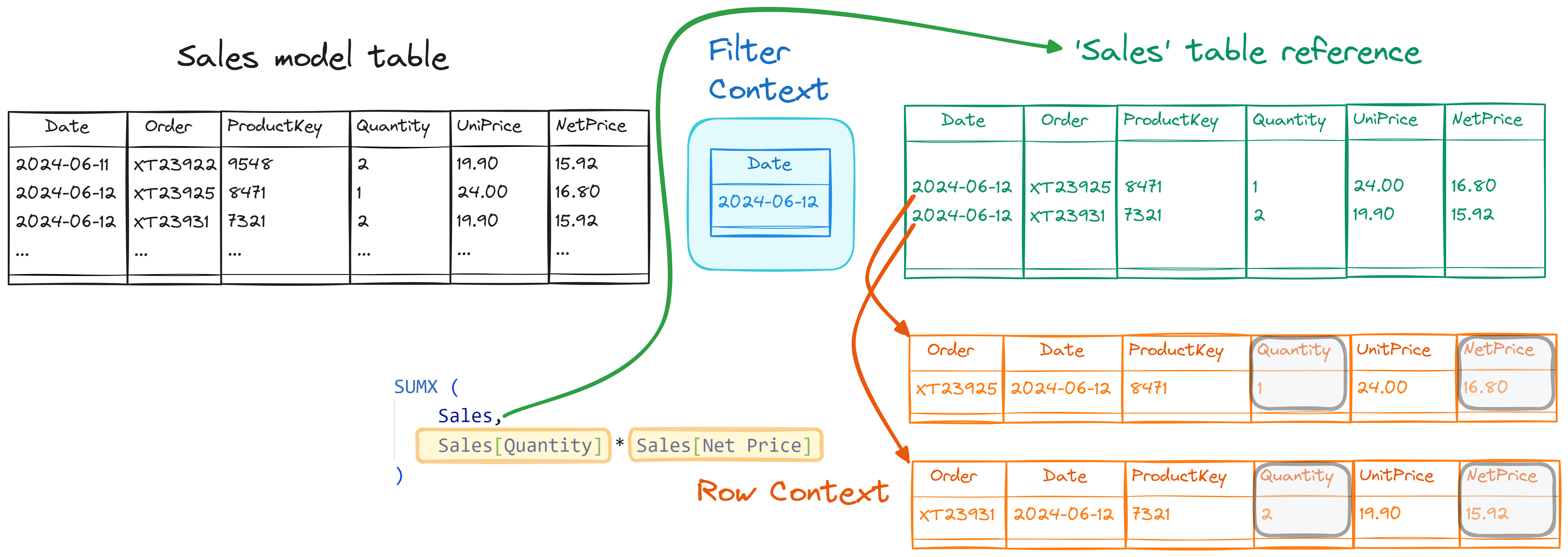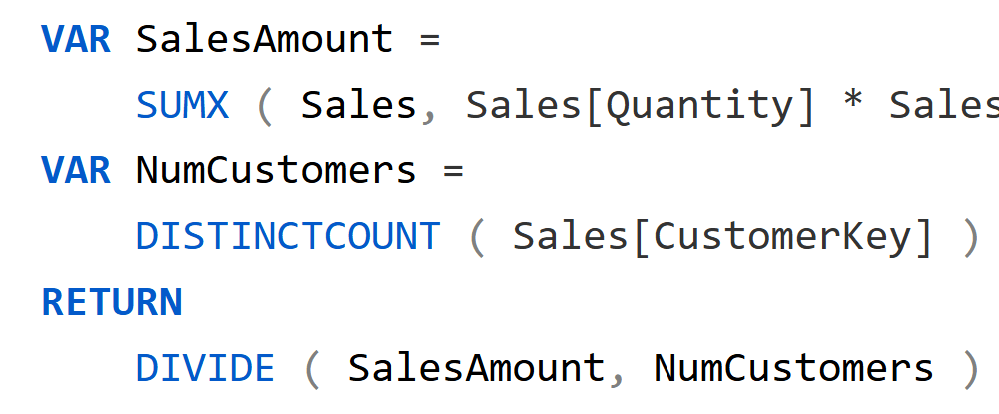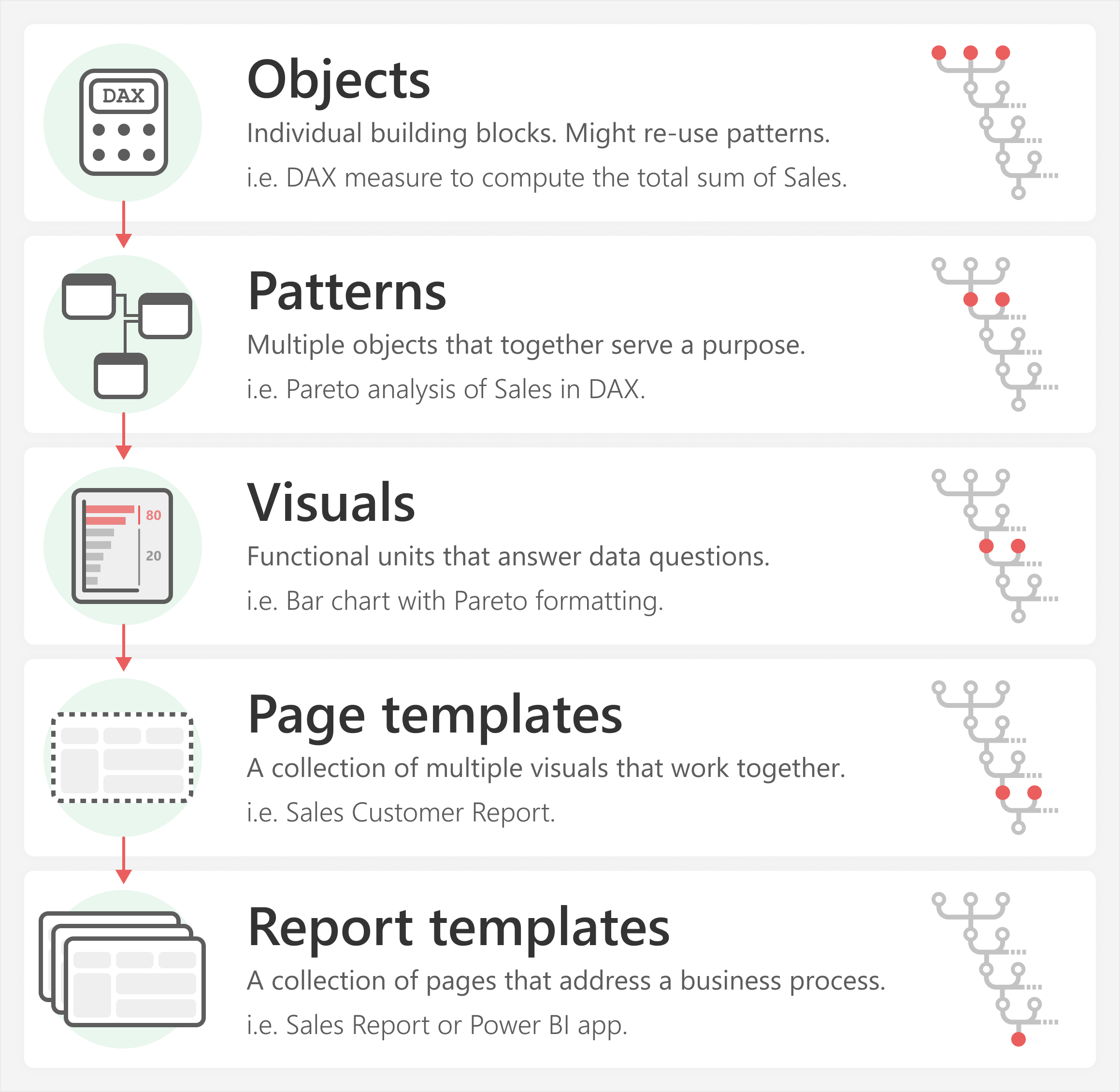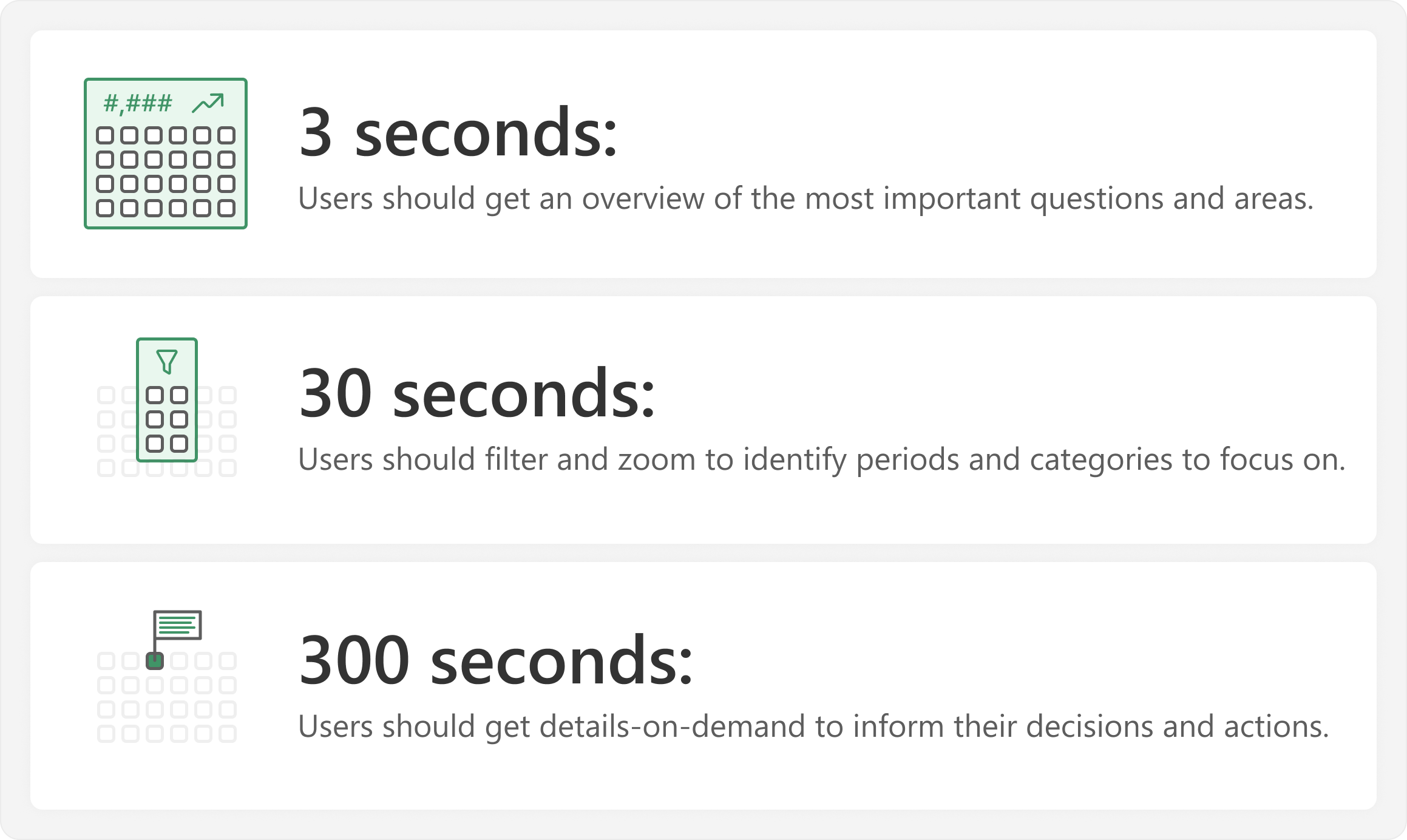-
The choice of data types can affect precision and performance because of internal conversions. This article shows how the right choice of data type and DAX code makes a significant difference. Read more
-
This article is about creating dynamic images in DAX measures to visualize data in tables or cards, including an easy way to do this in Figma, and a caution for using these DAX measures in real-life scenarios. Read more
-
This article describes the DAX context transition using a conceptual model based on a visual representation. Read more
-
One of the few golden rules in DAX is to always filter columns and never filter tables with CALCULATE. This article explains the rationale behind the rule. Read more
-
This article shows how you can highlight a single value in visual when comparing the distribution of a measure for one value versus all others. Read more
-
This article describes the DAX row context using a conceptual model based on a visual representation. Read more
-
This article clarifies how DAX evaluates variables, which is important to avoid common mistakes when using DAX for the first time. Read more
-
This article introduces the ‘atomic design methodology’ as an approach to make Power BI development more efficient and repeatable. Read more
-
This article describes the DAX filter context using a conceptual model based on a visual representation. Read more
-
This article describes a simple approach that you can apply to improve your reports and dashboards. Read more
